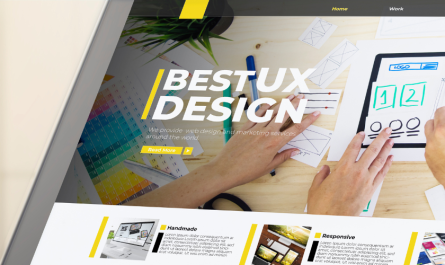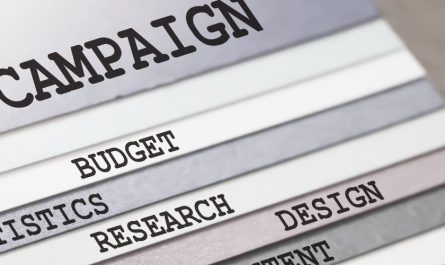Introduction:
In today’s rapidly changing world, graphic designers are at the crossroads of creativity and technology. Artificial Intelligence (AI) is revolutionizing the way designs are created, offering powerful tools that enhance productivity and creativity. From automating mundane tasks to providing design insights, AI is rapidly becoming an indispensable part of the design process. But how are graphic designers evolving in this age of AI, and what role do marketing agencies play in this transformation?
In this blog, we’ll explore how AI is changing the graphic design landscape, the role of integrated marketing strategies, and how agencies, such as those in Bangalore and Mumbai, are embracing this shift. Let’s look at how AI tools and evolving design trends are shaping the future of graphic design.
Why is this blog topic important?
The graphic design industry is in the midst of a profound transformation. With the rise of AI, traditional design workflows are being replaced by more streamlined, tech-driven processes. Understanding how AI impacts creativity and productivity will give designers the tools to stay ahead in an increasingly competitive market. Moreover, it’s important for integrated marketing agencies in Bangalore and marketing agencies in Mumbai to adapt to these changes in order to provide clients with cutting-edge designs that resonate with audiences.
Body:
1. AI Tools Revolutionizing Graphic Design
AI is offering graphic designers the ability to work smarter, not harder. Tools like Adobe Sensei use AI to automate repetitive tasks such as resizing images, color correction, and layout design. This allows designers to focus on the more creative aspects of their work. AI can also analyze data from previous design trends to offer suggestions for color schemes, fonts, and even the overall feel of a design.
For marketing agencies in Mumbai and Bangalore, AI-driven tools provide a way to quickly generate designs that are not only efficient but also aligned with current trends. This speeds up the creative process, making design teams more productive and able to focus on higher-value tasks such as conceptualization and brand storytelling.
2. How AI Complements Human Creativity
The main concern surrounding AI in design is that it might replace human creativity. However, AI is better understood as a tool that complements creativity rather than replacing it. While AI can generate basic design elements, it is the designer who makes creative decisions that ultimately shape the final product.
For example, when creating a brand identity for a client, graphic designers use AI tools for initial inspiration and efficiency. The design process, however, requires human input to connect with the target audience, evoke emotions, and ensure the brand’s vision is captured. Integrated marketing relies heavily on this kind of emotional resonance, which AI tools can’t replicate. Integrated marketing agencies in Bangalore and across the globe are using AI to assist their design teams while still keeping the human touch at the forefront of their work.
3. AI and UX/UI Design: A New Era of User-Centered Design
User experience (UX) and user interface (UI) design are becoming more intuitive, thanks to the help of AI. AI tools help analyze user behavior, predicting how users will interact with a product or interface. This data allows graphic designers to create more personalized and user-friendly experiences.
For integrated marketing agencies, particularly those in Mumbai and Bangalore, the ability to predict and adapt to user preferences is invaluable. AI can track everything from user navigation patterns to the effectiveness of color schemes in driving conversions. Designers and marketers can use these insights to optimize layouts, improve website design, and enhance overall user satisfaction.
4. Education and Upskilling: The Future of Graphic Design
As AI continues to shape the future of design, it is essential for graphic designers to stay ahead of the curve in order to remain competitive. Many design schools and online platforms now offer courses on AI-driven design tools, making it easier for professionals to upskill. For those working in marketing agencies in Mumbai or Bangalore, understanding how AI tools work is becoming an essential skill.
The future of graphic design lies in combining traditional skills with new technologies, thus creating innovative and dynamic designs. Designers who can leverage AI effectively will be able to deliver results that are faster, more data-driven, and more impactful. As AI evolves, designers will need to adapt by incorporating new software, tools, and techniques into their design process.
5. Collaborating with AI for Efficient Campaigns
For integrated marketing agencies, AI presents a unique opportunity to create more personalized and, consequently, high-impact campaigns. By using AI to analyze data from social media platforms, websites, and customer interactions, marketers can deliver more targeted content and designs. These insights help in crafting campaigns that speak directly to the audience’s needs and desires.
For example, AI tools can automate A/B testing for design elements such as CTA buttons, colors, and images. This allows marketers to quickly identify what works best for their target audience and optimize designs in real-time. The collaboration between AI and human designers leads to a more agile and, as a result, responsive marketing approach.
Conclusion:
The evolution of graphic design in the age of AI is inevitable; therefore, graphic designers who embrace this change will thrive. AI offers immense opportunities for streamlining design workflows; as a result, it improves user experience and drives creativity. However, it’s important to remember that AI is a tool that enhances, rather than replaces, human creativity. For integrated marketing agencies in Bangalore and Mumbai, adopting AI-powered tools will help designers stay relevant, deliver high-quality work faster, and meet client expectations in a competitive market.
Does this interest you? Connect with us to see how we can help you!
Trending FAQs:
- How does AI impact the role of a graphic designer?
AI streamlines repetitive tasks, allowing designers to focus on more creative aspects of their work. It enhances productivity without replacing human creativity. - Will AI replace graphic designers in the future?
No, AI enhances design processes but cannot replace the creativity and emotional intelligence of human designers. - What are the best AI tools for graphic design?
Popular AI tools include Adobe Sensei, Canva’s AI assistant, and Fotor for automated photo editing. - How can AI improve user experience (UX) in design?
AI can analyze user data to create personalized designs, improving overall usability and user satisfaction. - Can AI be used in branding and logo design?
Indeed, AI tools can suggest color schemes, fonts, and layouts for logo designs, thereby speeding up the process. - What skills should graphic designers learn to work with AI?
Designers should learn how to use AI tools, understand data-driven design, and, most importantly, adapt to new technologies to stay relevant. - How does AI influence web design and UX/UI?
AI helps predict user behavior and, as a result, optimize website design for better user experience and engagement. - Is AI in design only for big agencies or can freelancers use it too?
Freelancers can use AI tools to increase efficiency and, consequently, streamline their workflow, making them more competitive in the market. - What role does AI play in content creation for design?
AI helps generate design elements based on content, thereby making it easier to create cohesive and aesthetically pleasing designs. - What are some challenges graphic designers face when using AI?
The main challenge is ensuring that AI does not overpower the designer’s creative vision. It’s important for designers to maintain control over the artistic direction.
Some of the services that Clevertize provides are, for example, marketing strategy, content creation, and brand development.:
Creative Services, Performance & Digital Media Marketing, Visual Identity & Branding, Campaign Management & Analysis, UI/UX & Website design, Video creation, Media planning & buying, Chatbot & more.
To ensure a high Return on Investment, talk to Clevertize today!
Reach out to us at saumya@clevertize.com!





